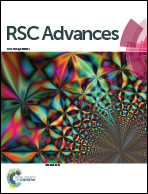Constant pH molecular dynamics study on the doubly mutated staphylococcal nuclease: capturing the microenvironment
Abstract
A constant pH molecular dynamics (CpHMD) simulation method utilizing generalized Born electrostatics is employed to examine conformational changes of a protein containing a buried ionizable pair in its hydrophobic core, specifically considering a hyperstable variant of staphylococcal nuclease (Δ+PHS). It is observed that the average geometrical parameters obtained from CpHMD simulation at pH 8 and from quantum mechanical calculation nicely match to the reported crystal structure of V23E/L36K variant of Δ+PHS. Strong hydrogen bond formation and salt bridge interactions in the microenvironment around the Glu-23/Lys-36 pair stabilize the core of the V23E/L36K variant. Small rearrangements of the backbone carbonyl oxygen of Gly-20 and the side chain of hydroxyl group of Thr-62 are observed, and these changes in orientation allow for interaction with Lys-36 and Glu-23, respectively, in V23E/L36K variant. We do observe a long hydrogen bond correlation and lifetime (716 ps) in the microenvironment. All these observations suggest that the V23E/L36K variant is stable and CpHMD method can capture small rearrangements of the residues in a protein.


 Please wait while we load your content...
Please wait while we load your content...